Opinion & Analysis
From 783rd in the world, to LIV, to The Open – The unorthodox rise of Travis Smyth

A year ago, Australian Travis Smyth was the 783rd ranked player in the world. Now, he’s preparing to play in the 151st Open Championship at Royal Liverpool.
Smyth grew up in the small beach town of Shell Harbor, which is about an hour and a half south of Sydney. He didn’t pick up a golf club until he was 12 years old, but he rose through the amateur ranks quickly. By August of 2017, Smyth was the 11th ranked amateur in the world.
Shortly thereafter, Travis found himself deep into contention at the 2017 U.S. Amateur at Bel-Air Country Club in Los Angeles. His run was impressive, knocking off Will Gordon in the round of 64 and eventually beating now PGA Tour star Will Zalatoris to advance to the final eight. The Aussie’s run ended when he lost a heartbreaker 1 down to eventual champion Doc Redman, but he made his presence in the amateur golf world known.
After officially placing T5 amongst the best amateurs in the world, Smyth wasn’t done yet. Just two weeks later, he went on to win his first professional tournament as an amateur. He emerged victorious at the Northern Territory PGA Championship on the PGA Tour of Australasia.
“I just had one of those weeks where everything went right and I won by seven shots and blitzed the field. It was an amazing feeling. I was reassured that being a professional golfer was my thing to do.” Smyth said.
Fast forward to 2022, and a monumental event in the history of the sport began to take shape. There was a civil war brewing in the world of golf, and Greg Norman was at the forefront of a new tour called LIV Golf. Beginning in April of 2022, LIV began poaching some of the world’s best golfers, including Phil Mickelson and Dustin Johnson.
LIV reportedly spent upwards of a billion dollars on player acquisitions and the tour was criticized for its lack of qualifying process, rendering it insufficient for OWGR points. However, there was a qualifying event prior to the first LIV event at Centurion Club outside of London.
The Asian Tour had an event called The International Series England, and the top-6 players on the leaderboard would get a chance to play at LIV London.
Five years after his charge at the U.S. Amateur, the now 27-year-old Travis Smyth who was playing on the Asian Tour suddenly had the opportunity of a lifetime.
The gritty Aussie took advantage, finishing in second place at the event behind Scott Vincent. The biggest payday Smyth had received as a professional golfer to that point was just over $30,000. He now had a chance to play for $4 million at Centurion Club.
At the time, he knew he would also be playing at LIV Portland and most likely LIV Bedminster as well, so it was important for him to capitalize on the opportunity. He certainly knew the stakes, and said it “felt like a major” because of how important playing well on LIV was to his career.
“To me, they were the three biggest events I’ve ever played in.”
Although he felt he could have played better, Smyth finished T33, T29 and 22nd in the three events and walked away with $850,000.
Life as a professional golfer on most tours can be a grind. Flights, hotels and daily expenses can add up when you aren’t making a great deal of prize money. Especially coming from Australia, where it’s far away from where he plays, flights are especially expensive.
Now, the former 11th ranked amateur had some breathing room and could focus solely on improving as a player.
“It just took a huge financial pressure off of my back. With that money, I can fly business which definitely helps. I’m staying in nicer hotels, I’m paying my coach more money so I can have him around more often. Now I can spend the money on my team to try and get better each and every day, which I’m assuming that the best players in the world do as well. They pay the big money, they get a lot of support from their team, so I’ve used a fair chunk of money to put that that team environment around me.”
Smyth’s ability to invest money back into his game immediately paid dividends. He won the Yeander TPC on the Asian Tour less than two months after LIV Bedminster, and he believes playing on LIV played a large part in helping him get the victory.
“I just felt like playing on LIV, competing at that level, and then going back to the Asian Tour gave me a little bit of confidence.”
“Since my win, I’ve been playing pretty consistently, so I definitely feel like everything I’m doing is taking me in the right direction and feel like more wins are going to be coming soon.”
Smyth’s prediction of playing better golf after investing in his team couldn’t have been more accurate. The 28-year-old got off to a blazing start in 2023. He finished in a tie for 6th at the PIF Saudi International which featured a strong field that included winner Abraham Ancer, Cameron Young, Joaquin Niemann, Paul Casey, Mito Pereira, Patrick Reed, and more.
The strong play didn’t stop there. Smyth then finished 7th at the International Series Qatar and then found himself playing in the World City Championship in Hong Kong. The event was especially important because the top four finishers would qualify for the 151st Open Championship at Royal Liverpool.
To make things even more difficult leading into one of the biggest events in his life, Smyth had been, and still is, dealing with some off-and-on illness over the past 12 months.
“For the past six months to a year I’ve been getting sick every two-and-a-half to four weeks. I’m traveling a lot; I’m traveling from time zone to time zone. Getting access to decent food can be tough sometimes. This year I’ve been shocked that I’ve played well because I’ve felt really average in almost all of my events. I’m doing minimal practice in the practice rounds more than half the time. There’s definitely something going on.”
The head cold and severe body aches returned with a vengeance in Hong Kong, but once again the Aussie showed his resolve.
During the tournament, Hong Kong Golf Club showed its teeth. The conditions were brutal. The winds were strong, and the course was rainy, wet and miserable.
Just like Travis Smyth likes it.
“It was raining, it was playing tough, and I raced up the leaderboard. I was really committing to my swings, and everything fell into place. I shot a nice score and everyone around me seemed to go backwards.”
This July, Smyth will be competing in his first major championship.
“Getting into my first major, I’m thrilled, stoked, all the emotions. It’s a great feeling, I cannot wait to play in my first British Open.”
The Australian is going to head over to the UK early to try to get a better feel for links style golf, but understandably, he’s hoping the conditions are tough the week of the Open.
“I kind of hope it’s a really hard, windy rainy British Open”.
Smyth feels like his game will be in a place where he can surprise some people at The Open. He’d be happy to make the cut but is certainly capable of more.
“I’d like to make the cut, but a successful week would be top-15. I’m definitely good enough, my good golf is good enough. Yeah, top-15, top-20 I’d be pretty stoked with.”
When I pressed the affable Aussie on whether or not he could win, he laughed but wouldn’t rule himself out.
“Do I think I could do better? Yeah, sure. But baby steps for my first Open.”
Smyth’s talent and his determination can’t be questioned. He was a highly ranked amateur player and has shown remarkable improvements since he’s been able to strengthen the team around him.
I’m not ruling him out either.
- LIKE84
- LEGIT22
- WOW10
- LOL3
- IDHT1
- FLOP1
- OB2
- SHANK2
Opinion & Analysis
The Wedge Guy: What is a “wedge” anyway?
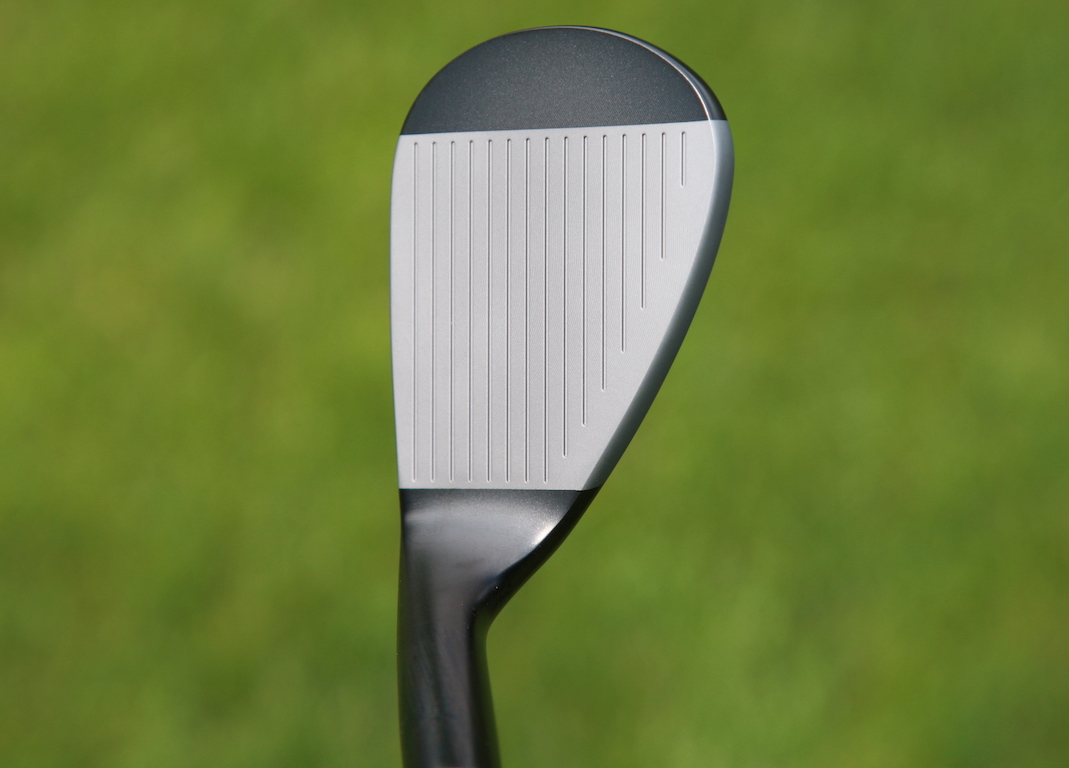
This week’s post is somewhat of a continuation of the recent path we’ve been on, discussing the nuances of those high-loft clubs at the short end of our sets – those specialty clubs we call “wedges.” The real question might be:
“What is a ‘wedge’ anyway?”
Can that name be given to any iron-type club simply based on its loft? And if that’s the defining criteria, where do “wedge” lofts begin? And can clubs of all different design configurations still all be “wedges” just because they fall into that arbitrary range of lofts?
To the first question, my historical research indicates the term “wedge” first came into common use in the 1930s with the invention of the original sand wedge, generally credited to Gene Sarazen. As the legend goes, after flying with Howard Hughes and observing the use of flaps to make the airplane go up or down, he conceived the idea of a downward angle on the sole of a niblick to make it “reject” from the sand. So, after numerous prototypes and testing, the club that came to be known as the “sand wedge” was born.
Those clubs were about 55-56 degrees of loft, and quickly became widely adopted because of this revolutionary performance from bunkers. My guess is the term “wedge” was applied to that club because that’s exactly how you used it – you “wedged” the club between the ball and the turf – loft made the ball go up and the sole made the club “bounce” off the turf.
The professionals of the 1940s and 1950s began to use their sand wedge for more specialty shots around the greens, but most often relied on their highest lofted iron for most routine pitch shots. In sets back then, that club had 50-52 degrees of loft and was often called a “pitching wedge,” but some labeled it simply a “10-iron,” or in Ben Hogan’s case, the Equalizer.
But that club looked like the irons it matched, bearing little resemblance to the specialty “sand wedge” with its big flange and heavy sole, but I really don’t know why it was also called a “wedge.”
As iron lofts began to strengthen in the 1980s, the need for a “gap wedge” came about, as that valuable 50- to 52-degree iron was disappearing. Then at the other end of the set, the “lob wedge” appeared. Both of those clubs bore some resemblance to the sand wedge because they were most often presented as loft extensions in manufacturers’ wedge product lines.
So, now let’s fast-forward to 2023. Most iron sets have a “P-club” of rarely more than 45 degrees, and we’re seeing more and more with as low as 42 degrees of loft. Many of the iron models offer set-matching “wedges” labeled “A”, “G”, “S”, etc. to extend the iron design up into the higher lofts. These all look almost identical to the 6-iron in that set, because this industry is still caught up in the notion of “matched” sets. (But that’s a topic for another day)
In the “wedge” category, product lines can be confusingly broad, with lofts from 46 to 64 degrees and all kinds of specialized sole configurations. So, back to the original question — what is a “wedge?”
Think about it this way.
At the long end of your set, the club with 22 to 24 degrees of loft might be configured as a fairway wood, or a hybrid, or a hollow high-tech “driving iron,” or simply the 4- or 5-iron that matches your irons. Each golfer can determine which configuration serves him or her best at that loft and the distance it produces.
Likewise, the clubs at the higher loft end of your set might look like your 6-iron, or might look like a traditional wedge, or might look like one of the numerous specialty wedges with a wider sole. My “wedge” designs for Edison Golf don’t really look like any of those.
But just like those options you have to build out the long end of your set, each of those various ways to configure a higher-lofted club will produce different results. So, can we really lump all of these high-loft options into a singular category and call all of them “wedges?”
Or is it time to come up with a totally different word to describe those high-loft clubs in our bags that have the assigned task of delivering consistent results at a range of distances as we get closer to the green?
I’m not sure I have the answer, but it should be fun for all of us to stop and ponder the question? Your thoughts, everyone?
- LIKE17
- LEGIT6
- WOW0
- LOL0
- IDHT0
- FLOP0
- OB0
- SHANK4
Opinion & Analysis
The best bets for the 2023 John Deere Classic

Probably not quite the ‘classic’ of its name, but the John Deere provides some recall of the good and bad of golf betting.
Back in 2013, a young Jordan Spieth made his reputation by sinking a 72nd hole bunker shot to put the willies up course specialist and lumpy bet Zach Johnson. As is the way, the Deere Run guru then bogied his final hole, going on to defeat in a three man play-off.
Fast-forward nine years and J.T Poston landed a confident wager in last year’s event, leading all the way to land a comfortable three shot victory. Can’t wait to see which way it goes this time.
Expect birdies galore around the course this week, with very little difficulty in finding fairways.
With most of the field managing to hit the large greens, GIR stats are less worthy than they might otherwise be. Instead, players need to hit it close enough so they make the majority of putts. As with previous winners Bryson DeChambeau and Lucas Glover (to name just two), high-class ball-strikers can give themselves enough chances to land their share of birdies.
Current form looks a must here this week, with cross-over form from Travelers including Spieth, DeChambeau, Daniel Berger and Brian Harman, and Rocket Mortgage champions Cameron Davis and DeChambeau showing up well at this week’s venue, all recording a similar winning score.
When the market opened, I felt Emiliano Grillo would be third or fourth favourite, so finding him at a bigger price than PGA maidens Denny McCarthy, Adam Schenk and new star on the block Ludvig Aberg was a pleasant surprise.
The three names seem to have more improvement in them than the 30-year-old Argentine, but none have the victories, or the course form, to justify being ahead in the market.
McCarthy has lifted his reputation even further with his play-off loss at Muirfield and leading to halfway at River Highlands, but he faded away when under the cosh here last year, allowing the experienced Grillo to be the closest challenger to Poston (alongside Chritiaan Bezhuidenhout), whilst the 23-year-old Aberg may well be the Second Coming but faded away late on at both River Highlands and Detroit, recording large minus figures for his iron play. Sub 25-1? Really.
Schenk makes a lot of sense on recent form, with iron play making up the most of his impressive tee-to-green stats, but at anything over 25/1 in a weak field, the Charles Schwab winner appeals more than anyone.
Grillo ranks 3rd on tour-tips overall ranking for this event, with half-a-dozen instances of top-25 tee-to-green play in his last eight starts. In the same period (since Bay Hill) the Argentine has listed in the top 12 for approach play on five occasions, leading the field at the Arnold Palmer and ranking 12th at Travelers.
The 15th place at River Highlands on his last outing is the best finish there since 2018 (19th) after which Grillo suffered a slump, falling down the world rankings from 47th to 156th during 2020.
2021 saw him come back with a runner-up behind Stewart Cink at Harbour Town, following up a year later when matching his second place here with a silver medal behind a rampant Tony Finau at the 3M.
Grillo was trending in the right direction before his play-off win at Colonial, with form figures of 7/5/23 and an unconcerning missed-cut at the PGA, and the win, from a nervous Schenk, and the world number one Scottie Scheffler, reads very nicely in this field.
Whilst never the greatest putter in the world, that aspect has improved greatly. Now ranking in 6th for putting average off a large number of greens hit, he has positive figures at five of his last seven starts and comes here recalling last season’s +8.5 strokes tee-to-green and +4 strokes for the flat stick.
Doug Ghim is playing nice golf at the moment, several years after being touted as a superstar.
This test suits the short-hitting but accurate player, and with form figures of 33/15/12/19/27, he’s the type to appeal as a solid top-20 bet.
For win purposes though, I’ll revisit a Grillo formline and row in with the man that lost to the selection by just one shot at the Web.com Tour Championship some eight years ago, Chez Reavie.
I put up the 41-year-old a couple of weeks ago at a monster 200/1 to regain his 2019 Travelers crown, and he gave us a thrill until fading away on Sunday, yet still paying out a healthy return for a place.
A 2021 finish of 18th and a previous pair of top-15 finishes led to him going off around 50/1 for this event 12 months ago, and I’m not sure he’s done anything, or faces tough enough opposition, to be 10 points longer.
Previous to his latest win at the Barracuda in July last year, the three-time winner posted 27th at Colonial and 8th at River Highlands. This time, he comes here after being 12thg at the halfway stage of the Charles Schwab and in second place after three rounds in Connecticut.
Now, with six consecutive cuts made and four of his last eight rounds in the low-to-mid-60s, he arrives after recording an average of between 5.5 and 6.0 strokes for approaches and tee-to-green, a repeat of which will see him bang there come Sunday evening.
With River Highlands and Deere Run form in abundance, he’s yet another old campaigner I feel will prove too much for the young guns.
Finally, we’ll go with a pair of three-figure pokes, firstly in the way of David Lipsky, a player with two wins on the European Tour at tracks that require a touch of guile over strength.
It may be five years since the 34-year-old worked his way around Leopard Creek to back up his Crans victory, but his career has not been devoid of highlights, including a four shot victory over Taylor Pendrith at the short San Antonio course in Texas.
2021 saw him record six top-10 finishes, including at Abu Dhabi and Valderrama, whilst a year later he finished top-10 at the Corales and better-class Mexico Open behine Jon Rahm and Tony Finau.
A season-opening top-five at the Sony promised much and, whilst it hasn’t gone that well, Lipsky can still boast top-20 finishes at the Charles Schwab and Memorial, where at halfway he was first and sixth respectively.
Always around 24th place last season, Lipsky has shown he can raise his game at a lower level, whilst two of his three victories have come in 25-under and 18-under. He can do a job when conditions suit, and at 125/1, he’ll do as a chance to gain some decent each-way money.
Next to him at 125s is 26-year-old rookie Carl Yuan, now finding his feet at this level yet massive amounts of points bigger than some of his more sexy rivals.
A winner on his home tour, he had a remarkable 2022, winning in Louisiana, and racking up a further four top-five and four top-10 finishes and getting himself in at the highest level a year after he was due.
Explaining why he missed promotion 12 months earlier, Yuan said it was every player’s dream to represent their country, so popped off to The Olympics rather than guarantee his PGA card through the final six events of 2021.
Still, he’s here now and, after a slow start, made three consecutive cuts – Houston, RSM and Sony – before another lull from mid-January.
Shaking that off, he bounced back to form with the halfway lead at the better-class Canadian Open, stating, “That’s my goal [retaining his card] coming into the week. That’s my No. 1 goal. Not a result goal, just like being in the present, hitting shot by shot and, yeah, being out here trying to have the most fun. All of it.”
It seems to be working as he finished a highly respectable 18th before landing another top-20 at Detroit last week after a third-round 64 had gotten him inside the top-10 going into payday.
This massive hitter will be able to club down for most of this week’s test, ensuring he builds on some steady seasonal figures for tee-to-green and with untold improvement to come.
There is a chance he needs a much bigger environment to thrive, but as an unexposed, potentially high-class improving recruit, he needs taking a chance with.
Recommended Bets:
- Emiliano Grillo
- Chez Reavie
- David Lipsky
- Carl Yuan
- LIKE1
- LEGIT0
- WOW1
- LOL0
- IDHT0
- FLOP0
- OB0
- SHANK0
Opinion & Analysis
The Wedge Guy: The case against set-match wedges
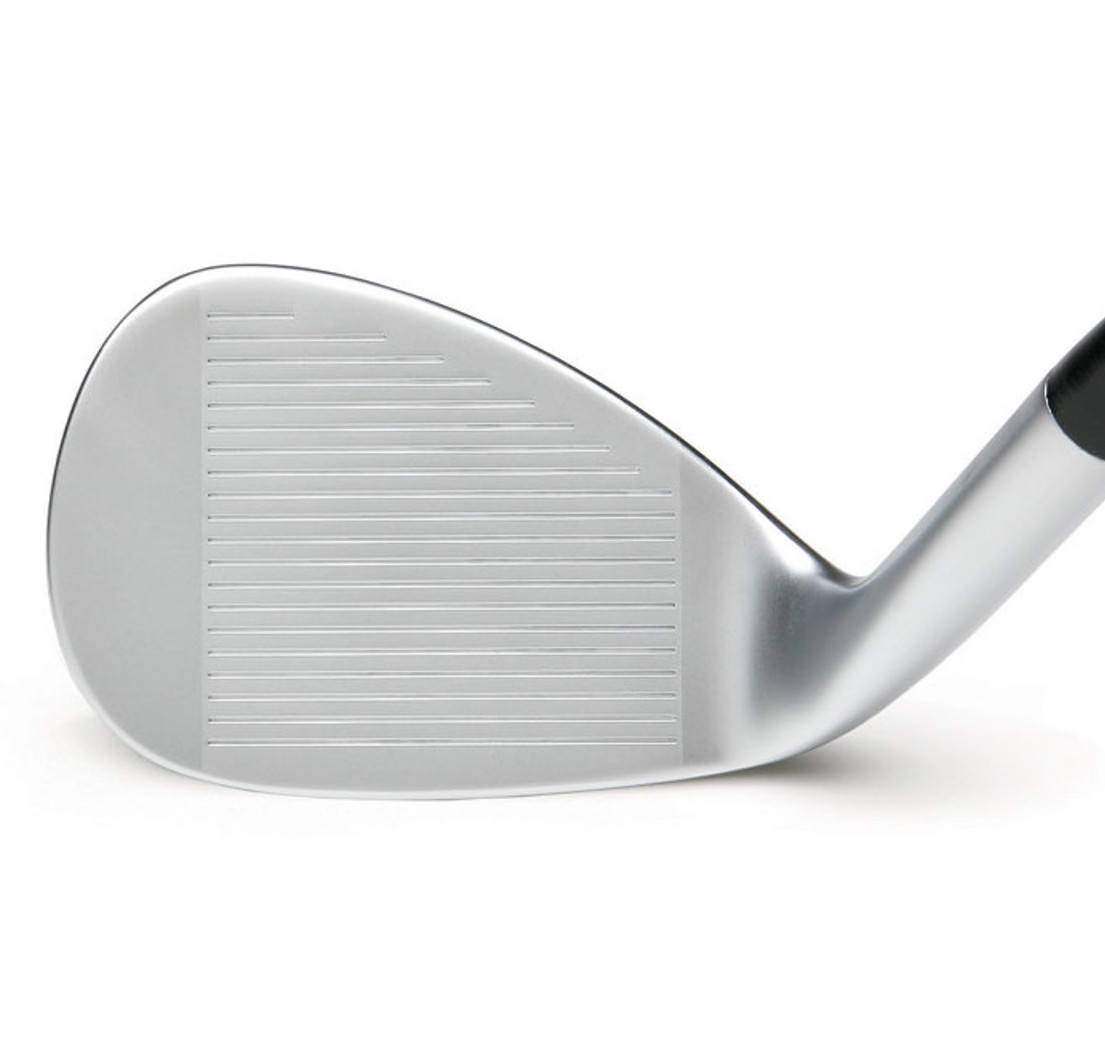
One side-effect of the relentless effort by major iron makers to win the “launch monitor wars” that pit one 6- or 7-iron against another is that the lofts throughout sets of irons have been continually strengthened to a point of what I consider ridiculousness. There are two major problems with this trend in specifications for sets of irons. The first is that to try to win the “launch monitor wars,” iron makers have to try to make their 6- and 7-irons go farther than the other guys’. That means making those mid-irons stronger in loft and using a bit of “trickery” by increasing the loft gapping between your higher-loft scoring clubs so that your “P-club” doesn’t get too strong, too (though modern “P-clubs” of 43-45 degrees of loft are really not “pitching wedges” at all).
Historically, iron lofts progressed through the set at four-degree loft intervals, and .5-inch length differentials. This wasn’t happenstance at all, it was the result of rigorous testing by professionals and average golfers. Those technical differences typically delivered consistent distance gapping from the pitching wedge down through the set.
A review of the specifications of almost every set of irons on the market today, however, will reveal that loft differentials are now five degrees between the short irons and as little as two degrees at the long end of the set. This is totally counter-intuitive to how you can improve your short iron and wedge precision. Why in the world would you want to increase the distance differences between your shorter irons, which is where you most need distance control precision? After all, a 6-iron shot that is 25 to 30 feet long or short is pretty darn good, but it sucks if you have a 9-iron or wedge in your hands.
Understand that the “holy grail” of distance in golf club design is the combination of high launch and low spin. Achieving this is relatively simple – put as much mass in the bottom of the golf clubhead as possible.
So, the second major problem caused by the “launch monitor wars” is how modern irons are designed. The early “solution” to longer-hitting mid-irons was extreme sole-weighting with thinner faces. The newer technologies we’re seeing in irons combine even faster faces with heavy tungsten inserts in the sole of the club.
But the problem with almost all irons on the market – especially in the “game improvement” category – is that this same design and technologies are applied throughout the “matched” set of irons and even into “wedges” that display that same design concept. And that’s where your prime scoring clubs are being compromised.
High launch and low spin are great in a driver or fairway wood, and maybe even desirable in your middle irons — but that is the exact opposite of what you need to achieve consistent distance precision in prime scoring range when you have a short iron or wedge in your hands.
Almost all accomplished players have learned to hit their short irons and wedges with a penetrating ball flight and lots of spin to stop the ball in its tracks once it hits the green. So why would you ever want to play short irons and wedges that have all their mass at the bottom, which is designed to deliver the exact opposite of what you should be seeking?
Now, let’s go back to the title of today’s post.
Either your 6- or 7-iron is 28 to 30 degrees of loft – but have you ever stopped to think that this loft is closer to that of your driver than to where your “wedge” lofts begin (around 45 degrees)? I feel certain that no golfer in the history of the world has ever proclaimed
“I really like my 7-iron. Can you make me a driver that looks just like it?”
In fact, from your 7-iron down to your driver, you likely have at least four, if not five, completely different clubhead designs in order to optimize performance at a given range of lofts. That iron design might evolve to a driving iron design a few degrees lower, then most likely to a hybrid design a few degrees lower than that, then to a fairway wood as lofts get below twenty degrees, and finally to a driver at 9 to 12 degrees.
So, if it takes four to five completely different clubhead designs to optimize performance at the long end of the set, how realistic is it that only one design throughout your set of irons can deliver the performance and precision you need at the short end?
I’ve always believed that every club in your bag has a specific purpose and expectation. Fairway woods, hybrids, and long irons are to get you close to or maybe even on the green from a long-distance approach. With middle irons (5 through 7 or 8), your goal is to get on the green within a reasonable distance, or certainly not to leave yourself a tough greenside save.
Your “money clubs” are those with lofts above 37 to 40 degrees, as this is where you have a chance to get close enough for the occasional one-putt, whether that is for a birdie, par, or bogey. And this is the end of your set where you likely have not spent the time to make sure it’s just right.
To accent just how important this part of your set really is, did you know (if you discount the fact that almost all so-called par-5 holes on the tour are really just long par 4s for those guys) the entire PGA Tour is over par outside 9-iron range?
Something to think about, for sure.
- LIKE59
- LEGIT18
- WOW4
- LOL2
- IDHT0
- FLOP4
- OB0
- SHANK3
-

 19th Hole2 weeks ago
19th Hole2 weeks agoTiger Woods delivered stinging message to major winner after denying him lift on private jet
-
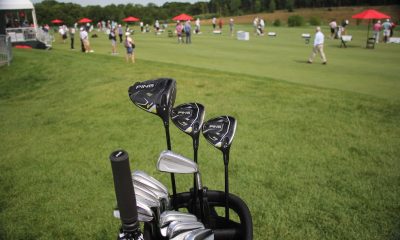
 Whats in the Bag2 weeks ago
Whats in the Bag2 weeks agoSeamus Power WITB 2023 (June)
-

 Whats in the Bag3 weeks ago
Whats in the Bag3 weeks agoOmar Morales WITB 2023 (June)
-

 Whats in the Bag3 weeks ago
Whats in the Bag3 weeks agoBlayne Barber WITB 2023 (June)
-

 Whats in the Bag3 weeks ago
Whats in the Bag3 weeks agoBen Carr WITB 2023 (June)
-
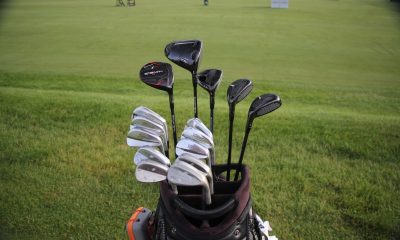
 Whats in the Bag2 weeks ago
Whats in the Bag2 weeks agoTom Hoge WITB 2023 (June)
-

 19th Hole3 weeks ago
19th Hole3 weeks agoJournalist alleges this is the ‘unforgivable’ act Phil Mickelson committed against Pat Perez and his wife
-
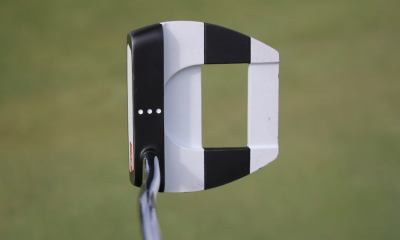
 News2 weeks ago
News2 weeks agoKeegan Bradley’s winning WITB: 2023 Travelers Championship








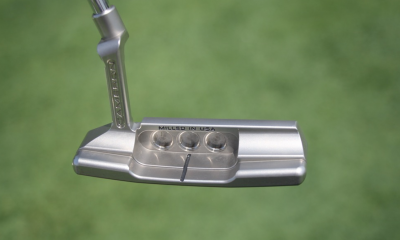

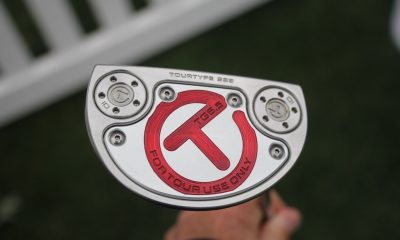



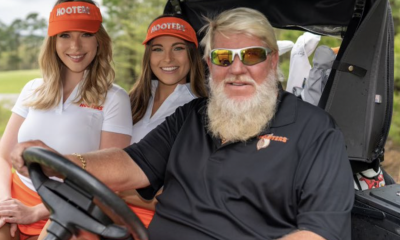











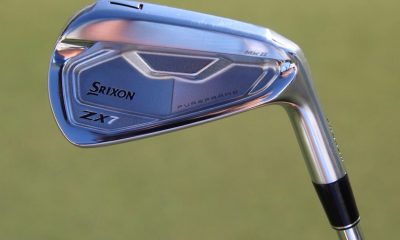

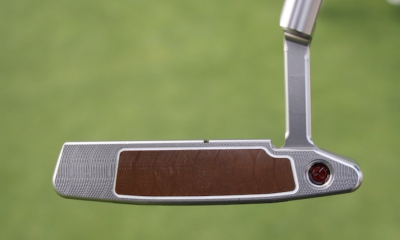

Jbone
Apr 16, 2023 at 11:24 am
So LIV isn’t a closed tour???
benny
Apr 15, 2023 at 9:27 pm
Man I love reading this. Lets go kid!! Rooting for you!
Joe Smith
Apr 15, 2023 at 5:53 pm
Another LIV nobody
Pingback: From 783rd in the world, to LIV, to The Open – The unorthodox rise of Travis Smyth - SOCAL Golfer
Chris
Apr 15, 2023 at 7:47 am
This was an excellent article. Thank you golfwrx and Matt. Good luck to Mr Smyth in the Open…I will be pulling for you.
Stewie Donaald
Apr 14, 2023 at 8:49 pm
Another LIV nobody.
Pingback: From 783rd in the World to LIV to The Open - The Unorthodox Rise of Travis Smyth - GolfWRX - All Post Times
David
Apr 14, 2023 at 9:50 am
Maybe this is what Phil meant when he said LIV would “grow the game.”